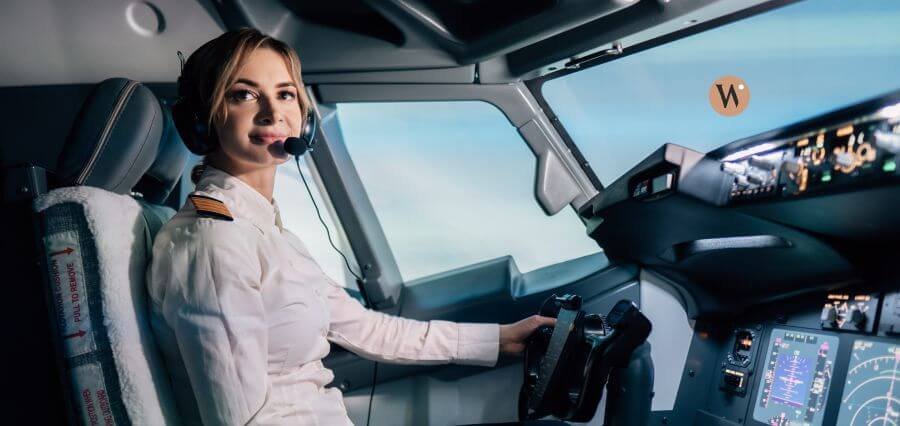Women were a driving force towards change of the design and development of aerospace technology with their precious skills, innovative thinking, and perseverance to make an industry that was men’s altogether. Through channels such as lackluster education, career opportunities, and recognition, women continuously demonstrated talent and success, leaving lasting and positive impressions. Their involvement spans from the beginning of flight success in its initial years to today’s advanced technology developments in space exploration, satellites, and aerospace engineering. From the groundbreaking 20th-century lead pioneer flights to the sophisticated space program missions of today, women have influenced the direction of aerospace development through leadership, scientific achievements, and technological expertise. Trailblazers like Amelia Earhart and Bessie Coleman paved the way for women in the skies, and mathematicians and engineers Katherine Johnson, Mary Jackson, and Dorothy Vaughan paved the path to America’s success in space.
This article outlines the groundbreaking role of women in aerospace technology throughout the centuries, honors their success in civilian, commercial, and defense applications today, and gazes towards the future of women’s equality and diversity leadership in an industry reshaped.
Historic Trailblazers and Early Milestones
Women joined the aerospace career early in the 20th century as trailblazing pilots started pushing beyond convention and traditional gender roles that had traditionally been determined by tradition. Amelia Earhart’s name is perhaps the most well-known of these eras, renowned for her record solo transatlantic flight of 1932. She was not alone in shattering boundaries, however. Bessie Coleman, the first African American woman pilot, and Jacqueline Cochran, commander and creator of the Women Airforce Service Pilots (WASP) program in World War II, were two of the courageous women who opened the door for generations of women pilots. Their passion and commitment were what turned the tide in allowing women to become accepted into careers in aerospace.
While most men served abroad fighting, women served in important roles in airplane production, engineering, and flight testing. Women pilots were permitted by the WASP program to fly military planes on non-combat missions, flying under pressure and demonstrating reliability. Although they were not officially accorded the status of being a military at this point, their work assisted United States war efforts and even assisted further in proving that women could be a success in technological and high-risk aerospace careers.
Contributions in the Space Age and Modern Aerospace Programs
With the advent of the Space Age in the mid-20th century, women started to play a massive role in the realm of space engineering and space science. NASA mathematician Katherine Johnson played an important role in calculating the flight path for some of the most monumental missions, including the Apollo 11 moon mission. Along with other colleagues such as Dorothy Vaughan and Mary Jackson, the contributions of Johnson’s work were crucial in the mission’s achievement of success, and hence its role in partially legitimizing women in scientific and technical professions.
Their labor, which had hitherto gone unseen to the public, is now visible and accepted, mainly through book and movie popularization. Women also occupy top astronaut and mission commander ranks. In 1983, Sally Ride was aboard the Space Shuttle Challenger, the first American woman to be in space. She broke the barrier for many women to venture out and walk in her footsteps, and some of them include Mae Jemison, the first African American female in space, and Peggy Whitson, the American record breaker of most total days in space. Women have also led the way in satellite technology, spacecraft design, and propulsion systems as engineers and scientists.
Future Horizons and the Road Toward Increased Inclusion
More and more women are appearing at the vanguard of pioneering aerospace research, entrepreneurship, and leadership. The NASA Artemis mission is a quintessential example as a mission designed with the aim of taking the first woman to the Moon, a goliath step towards equality and representation. While companies such as SpaceX, Blue Origin, and others are making history in opening doors for women to serve in fields as varied as robotics and systems engineering through to mission control and space policy, educational programs and mentorship are also opening doors for a new generation of girls and young women entering science, technology, engineering, and mathematics (STEM) as career paths, filling the pipeline with talent to propel the future. Despite these improvements, challenges continue.
Women remain underrepresented in a large proportion of high-impact technical and decision-making roles throughout the aerospace sector. Barriers remain in the form of implicit bias and differential opportunities to be promoted into leadership positions, and persisting pay disparities, that prevent individuals from being fully utilized. Remedies for these issues are policy reforms, open offices, and collaborative efforts to search and build diverse talent. When businesses prioritize gender equality as a central value, they create more equal workplace cultures and also access more diversified reservoirs of ideas and perspectives that can be a source of technological innovation fuel.
Conclusion
History and ongoing evolution of aerospace technology cannot fully be understood without an awareness of the rich contributions made by women. From the early days of flight through the space age to contemporary aerospace engineering, women have remained consistently able, creative, and invaluable contributors. They have helped drive missions toward even further success, push technology forward, and develop scientific knowledge through decades of success. In the years to come, women’s continued contribution to every sector of the aerospace industry is not just an issue of equality but an innovation and advancement imperative of competitiveness. By investing, sponsoring, and empowering women throughout the entire aerospace industry, the world can better achieve new heights and maintain long-term growth in this ever-evolving and vital business.
Read More : Katrin Mayrhofer: Trailblazing the Future and Elevating Horizons




